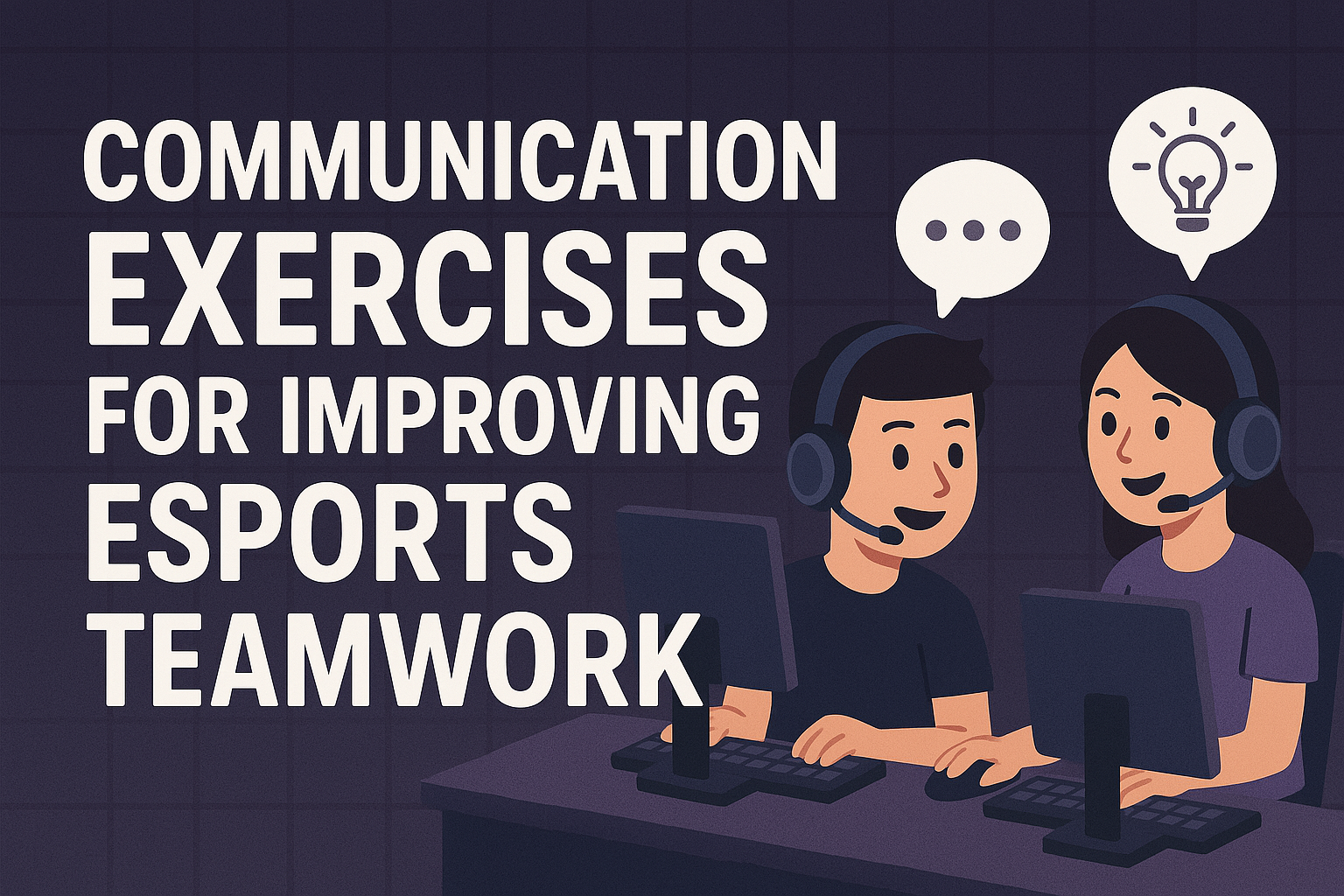Why Effective Communication is Crucial in Esports
Before diving into complex strategies, teams must establish a solid foundation of basic communication skills. Active listening is the first step. It’s not just hearing what your teammates say, but truly understanding their intent. One exercise to improve this is the ‘repeat-and-confirm’ method. After a teammate gives instructions, repeat their words back to them and ask for confirmation. This ensures clarity and reduces misunderstandings. Additionally, teams should practice using clear and concise language. In high-pressure situations, ambiguity can be disastrous. Practice relaying information quickly and accurately, avoiding unnecessary jargon or rambling. Finally, don’t overlook non-verbal communication. Pay attention to cues like tone of voice, body language, and even in-game pings. These subtle signals can convey important information and help you anticipate your teammates’ actions.
To complement these communication exercises, consider investing in high-quality gaming headsets. Brands like HyperX and SteelSeries offer headsets with excellent noise cancellation and clear audio, vital for fast-paced communication. These headsets ensure that every callout and piece of information is heard with precision.
Advanced Communication Techniques for Esports Teams
As teams progress, they need to refine their communication beyond basic skills. Role-specific communication is essential. In games with defined roles, each player should understand the specific information they need to relay and receive. For example, a support player might focus on callouts regarding enemy positions and cooldowns, while a carry player might communicate their resource needs and engagement opportunities. Scenario-based drills are invaluable for practicing communication under pressure. Simulate common in-game scenarios and practice relaying information quickly and accurately. This helps teams develop muscle memory for effective communication during high-stakes moments. Finally, post-game communication analysis is crucial for continuous improvement. Review recordings of your games and analyze communication patterns. Identify areas of strength and weakness, and discuss strategies for improvement. This process allows teams to identify recurring communication errors and develop solutions.
Managing Emotional Communication and Conflict Resolution
Esports is an emotionally charged environment. Tilt, frustration, and pressure are common. Recognizing and managing these emotions is crucial for effective communication. When emotions run high, communication can break down. Teams should develop strategies for managing tilt, such as taking short breaks, practicing mindfulness, or using calming techniques. Constructive feedback is another essential skill. Teams should learn to give and receive feedback in a way that is specific, actionable, and focused on improvement, not blame. Finally, conflict resolution strategies are vital for building team cohesion. Disagreements are inevitable, but teams should develop protocols for addressing them constructively. This might involve active listening, finding common ground, and focusing on solutions rather than dwelling on problems.
For deeper insights into managing crucial conversations, consider reading “Crucial Conversations: Tools for Talking When Stakes Are High” by Kerry Patterson, Joseph Grenny, Ron McMillan, and Al Switzler. This book offers invaluable tools for handling difficult conversations, giving and receiving feedback, and resolving conflicts – all crucial aspects of effective team communication.
Implementing Communication Exercises into Your Team’s Routine
Consistency is key to improving communication. Teams should create a regular schedule for practicing communication exercises. This might involve dedicating a portion of each practice session to communication drills or holding separate communication workshops. Utilizing communication tools and resources can also enhance practice. This includes using voice communication software with clear audio, digital whiteboards like Miro for visualizing strategies, and recording software for post-game analysis. Tracking progress is also crucial. Teams should monitor their communication performance and make adjustments as needed. This might involve using communication metrics, such as the number of successful callouts or the frequency of miscommunications. By consistently practicing and refining their communication, teams can build a strong foundation for success.
Thank you for taking your time to read the article. By purchasing using the suggested Amazon links you are supporting the growth of this website. Good luck on your journey and enjoy the song.
